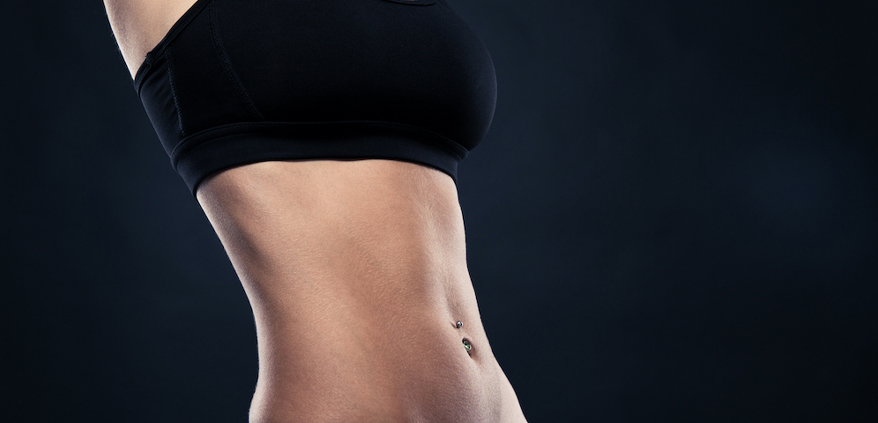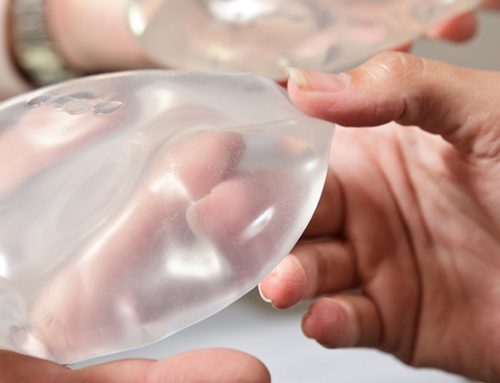Not all tummy tucks are alike. Some involve more extensive surgery than others, and for this reason, what to expect during recovery can vary from person to person. The aim of the tummy tuck is to slim and tighten the waist for a more shapely and youthful appearance, but the surgical route to get you there (and into some cute new clothes) can vary quite a bit.
Depending on the amount of excess skin and fat to be removed, incisions can be shorter or more extensive, including the repositioning of the belly button. But one of the biggest factors to impact recovery from a tummy tuck, also called an abdominoplasty, is whether or not a muscle repair is included.
Why the muscle sometimes needs a repair
If you have seen the abs on even one superhero you will know the muscle we are talking about. It is called the rectus abdominis and it runs vertically from your sternum to your pubic bone. It has a left and right side separated down the middle by a band of tissue called the linea alba.
The linea alba can become over stretched, usually during pregnancy but also due to extreme weight gain or a lifting injury. When this happens the two sides of the muscle move further apart, resulting in an outward bulging of the belly that doesn’t go away, even when weight (baby or otherwise) is gone. This condition is called diastasis recti.
Besides being a cosmetic issue for some people, this condition can affect posture and trunk strength. It can cause pain in the abdomen, hips, and back, as well as bowel and bladder issues, all of which can have a huge impact on quality of life.
Why the muscle sometimes doesn’t need a repair
Not all tummy tucks include a muscle repair because not all bellies that can benefit from a tummy tuck have a diastasis recti. Even when the linea alba is stretched out, it can sometimes return to its normal size on its own. Furthermore, if a woman has had a cesarean section, a repair will likely have already been completed at that time.
How the muscle is repaired
Diastasis recti can be corrected by a general surgeon, but plastic surgeons routinely do this as part of their tummy tuck procedure. The surgery involves folding over the stretched tissue of the linea alba and suturing the two sides of the rectus abdominis muscle together. Though you can’t see it from the outside of the body, this involves suturing up and down the whole length of the abdomen.
Why a muscle repair impacts tummy tuck recovery
The difference in recovery between a tummy tuck with muscle repair versus one without has to do with the fact that muscles contract. Unlike the skin and fatty tissue that cover the abdomen, the muscles underneath (and the rectus abdominis is a big one) are prime movers and stabilizers of the whole trunk. This means that they contract nearly any time you move your body. Even simple movements like lifting your arms when sitting upright or rolling over in bed can engage these muscles — and then there’s coughing and sneezing.
When the muscle is repaired it needs time to rest so that it can heal up. Over exerting yourself too early can compromise your results and will certainly be painful.
How a muscle repair impacts recovery
When a muscle repair is included with your tummy tuck, you will be required to be more careful and your recovery will take a bit longer — from three to four weeks longer.
Symptoms
After a muscle repair patients often experience feeling more full quickly when eating and the sensation of not being able to take as deep a breath as they used to. This is due to a decrease in the amount of room inside the abdominal cavity caused by tightening the muscles. The stomach has less room to expand and the diaphragm meets more resistance as it moves down to allow you to take a breath. Both of these issues, if they occur, typically resolve within four to six weeks.
Abdominal Binder
Shortly after surgery you will be given an abdominal binder to help support the repaired muscle and to reduce overall swelling. You will be given instructions on how to put it on and will be told to wear it regularly. You will probably need help putting it on and taking it off in the first few days.
Lifting restrictions
After surgery, your doctor will restrict you to lifting no more than about 10-15 pounds. You will be prohibited from lifting anything heavier for a full six to eight weeks after surgery. You will also not be allowed to do any core strengthening exercises, such as sit-ups, to avoid stressing and potentially tearing the repair.
Posture
It is typical of all patients after a tummy tuck to have slightly hunched over posture. This is normal and it is important not to force an upright position and put undue strain while your incision heals. This becomes even more important after a muscle repair. You may even be given a walker to get around the first week after surgery.
You still have to get out of bed
Even with a muscle repair, your surgeon will require that you begin moving about within a day of your surgery. This includes getting up to go to the bathroom and with some restrictions, taking a shower. This is important for your overall health and healing and the prevention of blood clots. Many patients opt to sleep in a recliner to make these movements easier. Have someone at home to help you, especially during the first couple of weeks.
Though the muscle repair does add some challenges to your recovery, the long term benefits can far outweigh them. A study published last fall (2019), showed postpartum women who underwent a rectus abdominis repair had significant improvements in trunk function, urinary incontinence, and overall quality of life.
If you are considering a tummy tuck and want to know more about muscle repair, Dr. Slack would be pleased to offer a consultation in his office near McKinney, TX. Please contact us now to schedule your appointment.




